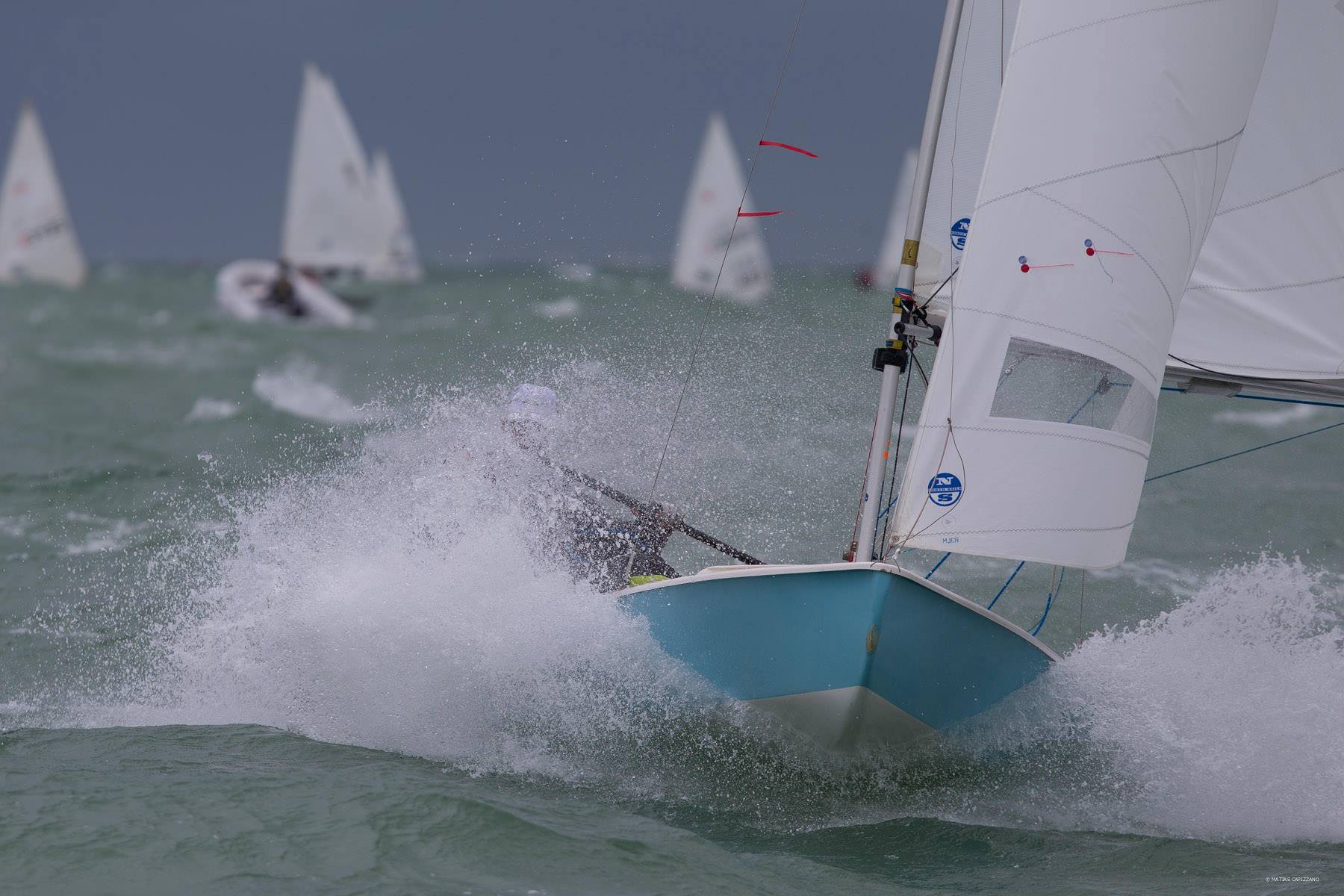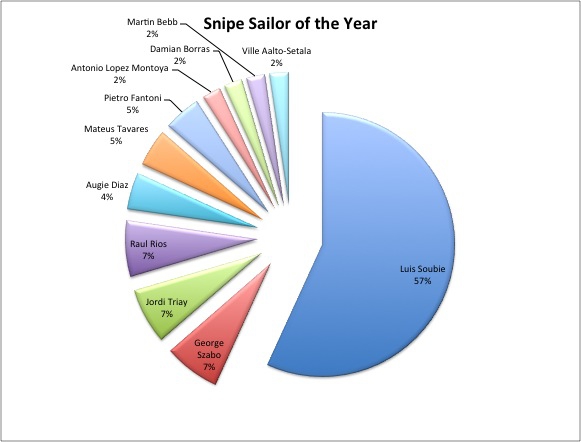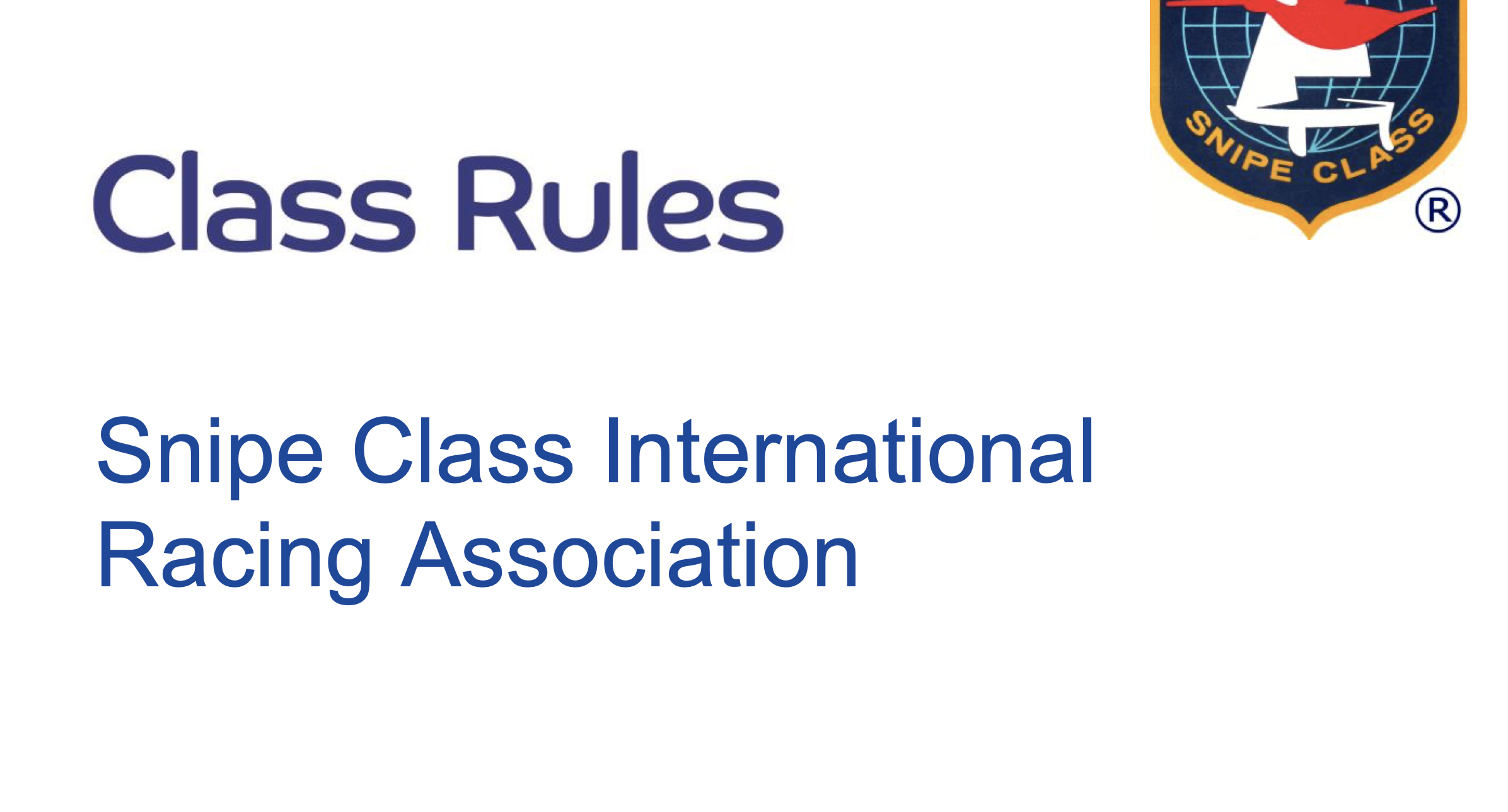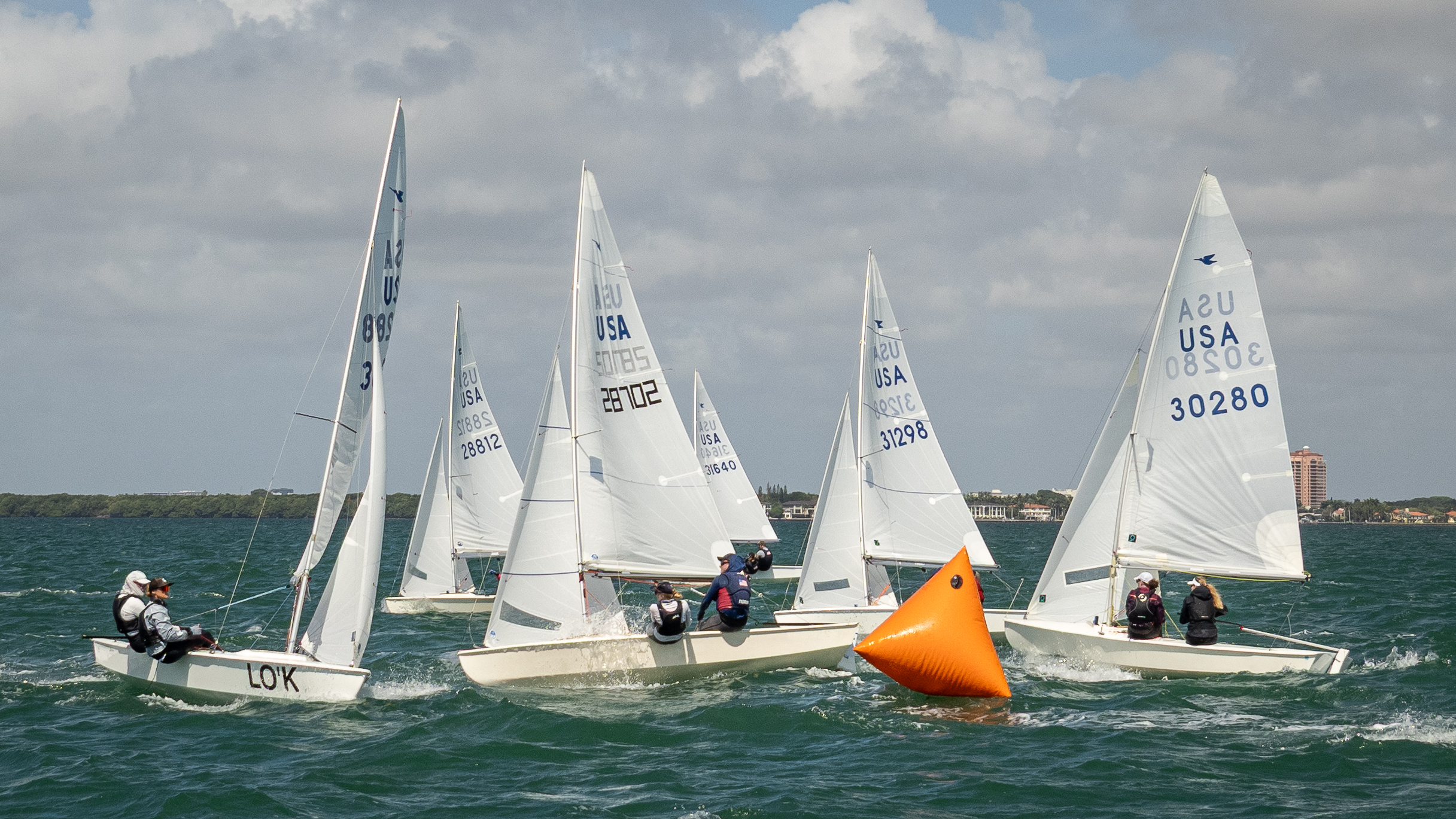How to Start Racing Snipes Right
By Carol Cronin The Snipe is a two person dinghy that brings the well-balanced class motto “serious sailing, serious fun” to life at every regatta. With a range of ages and abilities, the racing is always competitive and the parties are never dull. It’s a class we can grow old in, with age-appropriate challenges and opportunities for every generation. The article I wrote 20 years ago, Why Sail a Snipe, still holds true today. Some owners enjoy day sailing their Snipe, but competition is the boat’s primary appeal. And once you join this fraternity, anywhere in the world there is a Snipe sailor you can count on an instant friend. Your best path to the pleasures and challenges of Snipe racing will vary depending on your location. Here are a few generic tips to get you out sailing the first time. (Photo courtesy of Matias Capizzano) ...


By Carol Cronin
The Snipe is a two person dinghy that brings the well-balanced class motto “serious sailing, serious fun” to life at every regatta. With a range of ages and abilities, the racing is always competitive and the parties are never dull. It’s a class we can grow old in, with age-appropriate challenges and opportunities for every generation. The article I wrote 20 years ago, Why Sail a Snipe, still holds true today.
Some owners enjoy day sailing their Snipe, but competition is the boat’s primary appeal. And once you join this fraternity, anywhere in the world there is a Snipe sailor you can count on an instant friend.
Your best path to the pleasures and challenges of Snipe racing will vary depending on your location. Here are a few generic tips to get you out sailing the first time.
(Photo courtesy of Matias Capizzano)
…
Find a boat
- Google “Snipe fleet near me”(if you haven’t already), or check the lists of fleets on the international Snipe website. Don’t worry if there isn’t one. Many Snipe sailors travel to sail, so don’t let a little distance stop you from joining the fun.
- Check the regatta calendar, and then contact the fleet captain of an upcoming regatta. S/he will probably know if there’s a local boat available for charter, and if so whom to contact for more details.
- Ask if there’s a fleet “loaner boat” that might be available for a specific event. That’s a great way to test out the Snipe regatta experience at a very low cost.
Identify the equipment
- Once you’ve found a boat, figure out what brand it is and what mast it has. The current rig standard is the Sidewinder Gold, which has a gold web where the vang attaches. Other possibilities are the Sidewinder Standard (silver web), Proctor, Cobra 2, or Sidewinder Black. You may have to ask the boat owner for brand information.
- If the boat came with sails, figure out their make and model; some common brands are North, Quantum, and Olimpic. Models will usually be some combination of letters and/or numbers (eg. Quantum C5, Olimpic CRC, North PR-3). You can either ask or look on each sail; you should find a logo, and maybe the model lettering, close to the tack.
Tune to fleet standards
If you have adjustable spreaders, set them up to match the tuning guide for your sail brand and model. If you don’t have adjustable spreaders, make a note of their settings anyway. Ask another sailor to help you if you don’t understand how to measure the length and sweep.
Step the mast. Attach shrouds and jib luff wire. Measure rake/tension, and again try to match the tuning guide recommendations. Then make three marks with a dark Sharpie:
- Where the jib halyard sits against the mast, in a place where you will easily be able to see the mark while sailing the boat.
- “neutral” forward/aft position on mast and deck.
- 18 inches either side of the mast/centerline (as a jib trim reference)
Go sailing
If you are launching at a new venue, ask a local (or at least someone who’s sailed there before) about any navigational issues. Hitting bottom with a Snipe is to be avoided at all costs, since you will usually damage the boat and/or centerboard.
Launching: Hoist or Ramp?
Snipes can be ramp or beach-launched with a dolly. You can also use a hoist; the bridle should be attached to the aft end of port and starboard chainplates and then to a solid point a few feet aft of the balance point, which is usually near the mainsheet block. The boat should hang slightly bow down, to keep the mast clear of the hoist and chain.
Ramps make it possible to hoist both sails on land, but depending on your dolly setup you may scratch the bottom of your boat when hauling out.
If you’re using a hoist, you can launch/haul with the jib up, but if it’s windy it will make it harder to control the boat/sail. Roll up the main and secure the roll to the boom with the mainsheet.
For either method, use the following checklist to make sure you’re ready to launch:
- Close the bailer (if it’s left open when the boat isn’t moving, the cockpit will get wet)
- Make sure centerboard and rudder are set securely inside the boat.
- Lock mast forward/aft as far forward as possible (to keep it away from the hoist)
Sailing the Snipe
There’s a lot going on in a Snipe, so try to get out for a practice sail to get comfortable in the boat. Remember, many of the top sailors have been competing in these boats for more than a decade, so don’t expect to learn it all in one day.
Minimize the confusion
There are a lot of different ways to adjust Snipe sail shape, and as a newbie it’s easy to get overwhelmed by all the possibilities. Here’s a suggestion: focus on the “big lines” (those that make a lot of difference to performance and boat response) and cleat off the “small lines” (those that fine tune a boat’s performance) in a neutral or “safe” position.
Big lines (and what you should do with each at first):
- Mainsheet (play to balance helm)
- Jib sheet (ease when needed to match main trim; otherwise trim to 18” on splash rail)
- Jib lead (adjust so that leech is evenly open top to bottom and leech telltale is flying straight back)
- Vang (use to depower/unload helm as breeze builds; should be just slack when mainsheet is trimmed to max setting)
- Pole launcher line (set pole for downwind legs)
- Jib halyard (Upwind, pull to mark on mast. Off the wind, ease it off all the way, or pull it on just enough to stop the outboard end of the pole from bouncing.)
The rest are “small lines” that don’t make a big difference to speed/safety, but some are smaller than others. Here’s a list, in approximate order of importance, as well as what you should do with each when you’re getting started:
- Mast forward/aft (lines that control the mast’s position at the deck): cleat at or slightly ahead of neutral. This one is important, because off the wind you can damage the mast if it floats too far back, so make sure it’s securely cleated.
- Tack line (attaches mainsail tack to mast): tie off tight around mast
- Outhaul (tensions foot of mainsail): pull to max tension
- Jib cloth (removes wrinkles in jib, depowers sail): tension until wrinkles disappear from jib luff, ease off downwind
- Main Cunningham (removes wrinkles in main, depowers): ignore
- Traveler (helps to depower by dropping boom to leeward): cleat off at tightest setting
For more information, read Snipe Rigging 101
Remember to look around
The most important thing once you’ve got the mainsheet and tiller in your hands is to have fun and try to get your head out of the boat. Snipe racing is very tactical, both upwind and downwind, so try not to get too caught up in the dance steps of boathandling and instead enjoy the chess game.
Once you get ashore, ask questions of the veterans. One of the best things about this class is that everyone likes to share information. And no question is too small, because we are all still figuring out the best way to sail these boats.
What’s next
Did you have fun at your first regatta? Great. Ready to buy a boat? Even better. Here’s some basic information about costs and availability (though again, exact details will vary quite a bit with your location).
New Boats
There are builders around the world, including Jibetech (USA), DB Marine (Italy), Zeltic (Spain), Tsujido and Okumura (Japan). A new race-ready boat will cost around $16,000 by the time it’s on the starting line, because you will need sails, dolly, trailer, covers, etc. It’s a good investment, since well-maintained Snipes hold their value for many years. Equipment is strictly controlled by class rules, which reduces the “arms race” seen in many other classes.
Used Boats
There are usually good used boats available, though because the boats are so well built they don’t depreciate very quickly. A less than ten year old Snipe will typically sell for 70-80 percent of a new boat’s cost. Older boats listed for much less than that will be fine on a flat water lake, but their hulls may no longer be stiff enough to win races in waves.
Snipe transport
Once you own a boat, there are some logistics involved in getting to regattas (unless you are lucky enough to live close to where you sail, and can store your boat on site). Some Snipe sailors have multi-boat trailers, and those folks are usually happy to transport another boat to an event in exchange for sharing driving and/or expenses. Asking around the parking lot at one event is the best way to line up your ride to the next.
Start as a crew
Teaming up with another sailor who already owns a boat is a great way to get started. Just be forewarned: the fastest Snipe skippers have high expectations, so this is no easy umbrella-drink boat ride. As soon as the breeze comes up above 10 knots, crewing is physically much harder than steering. You’ll need to be fit, have good tactical and technical skills, and weigh the right amount to be compatible with your chosen skipper. (Ideal team weights add up to around 300 pounds, and most skippers are heavier than their crews.)
With many of the controls for boat speed in hand, a good Snipe crew is a valuable commodity on the circuit. One who can make her skipper laugh (or help him get out of a bad situation) is even more valuable.
For more information, read The Care, Feeding, and Training of a Snipe Crew and The Care, Feeding, and Training of a Snipe Skipper.
Regatta Info
There are a few quirks to Snipe regattas designed to keep the balance between Serious Fun and Serious Sailing for everyone involved. Depending on the level of the event (local, national, international), slightly different rules of conduct apply. The idea is to tailor the level of perfection to the level of the event. Either way, the sailing instructions are based on a template, so they should be pretty easy to understand.
Other thoughts
Once you’ve stepped into the Snipe world, you’ll realize how much time the winning group puts into their sailing. From driving many miles to tuning boats for days in the parking lot before the start of a big regatta, the true devotees enjoy the entire package. Their energy creates an atmosphere of learning and fun that is a heady beverage.
Fortunately, you don’t have to put in as much time as they do to enjoy this class; most if not all are very generous with information, so it’s possible to get up to speed quickly. And no matter what your level (or desired level) of skill, you can usually find someone in the fleet with similar goals.
There are many more questions you probably have about Snipe sailing, so the next step is to find someone who’s not quite as new to the class as you are. The only thing we veterans ask is that you show up at every regatta with your best attitude, and try your hardest on the race course. Of course, anyone who tries to win the party too is even more welcome. Join us!
Videos:
Comments for this post are closed










0 comments